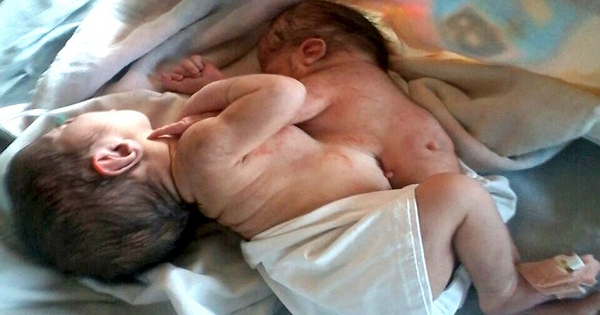28-year-old Hemlata Singh was prepared to delivery her baby at home. She didn’t once step into the hospital during her pregnancy, not even to get an ultrasound done.
When her own projected due date had passed for a week, however, Singh decided that she’d finally go in to the hospital for professional advice.
Doctors at Ummed Women’s Hospital delivered her child – only to discover that her son wasn’t alone.
The boy weighed 8 pounds, 1 ounce – and had a parasitic twin attached to his torso.
A parasitic twin develops when the embryos fail to separate at the right time during development. One of the twins becomes “dominant” and develops fully, while the other comes to reply on the dominant twin for survival.
“They luckily have separate hearts but share the internal mammary artery. This could make it little complicated to operate but chances of saving the baby is high as it is healthy,” their doctor assessed.
The two boys share the same liver and much of their blood vessels, but doctors are hopeful that they can save the dominant twin because the boys already have separate hearts and lungs.
At present, doctors are continuing to monitor the twins’ progress and health. They’ve decided to proceed with the separation procedure – but only when the health of the dominant twin is stable enough to do so.






